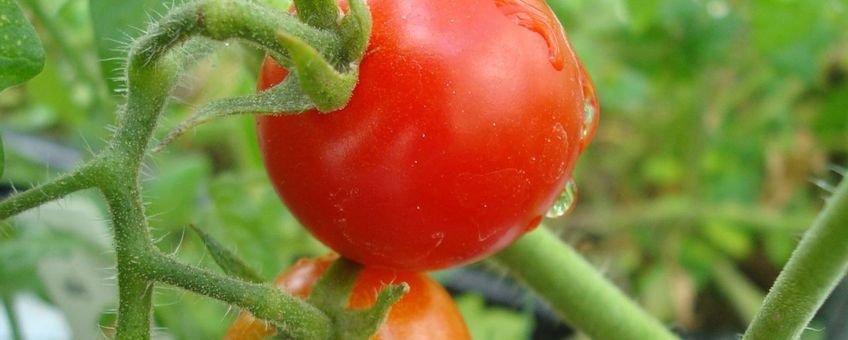
A sustainable agricultural ecosystem for Mars and the moon
Wageningen Environmental ResearchOn Mars and the moon nothing can be allowed to get lost, not the non-eaten plant parts, but also no human faeces. For a sustainable crop production we will have to build a sustainable agricultural ecosystem. Due to the circumstances on Mars and the moon, almost no or no air, often very low temperatures way below zero and the cosmic radiation, the crop production will have to be done indoors and below ground with a meter of protective soil on top. We are now investigating what the components are for such an agricultural ecosystem. Up till now we have identified four groups that will be necessary: pollinators, earthworms, bacteria and fungi. Together they could be able to form a simple sustainable agricultural ecosystem.
Pollinators
Pollination is needed for the plants to set seed. It is something we did earlier by hand in our experiments, but for real crop production it is too laborious. The most suitable pollinators, also in widespread use in greenhouses on earth, are probably bumble bees. Viable seeds are needed to achieve multiple generations of crops but bringing them by rocket is a waste of valuable space. Even for self-pollinators fruiting and seed setting is better when pollinators are involved. The bumble bees can easily travel to Mars in hibernation. Even with pollination, many generations of seeds from a relatively small gene pool may lead to inbreeding problems so, now and then, bringing new genes into the pool will be required.
Earthworms
Earthworms are needed to break down organic matter and to fertilise the soil. They do this by pulling the organic matter into the soil, eating it together with soil particles, and then excreting the mixture; in this way they break down the organic matter so that it is more easily available for growing plants and the soil fertility increases. Worms also dig an extensive system of burrows in the soil. This gives a better aeration of the soil and lets water enter the soil more easily. This all enhances plant growth. The first experiments with worms earlier this year turned out to be very promising. The worms are able to live in the soil simulants we use; after six months they are still alive and kicking.

Bacteria
Bacteria have two main tasks. The first one is to further break down the organic matter that has been chewed by the worms. The bacteria will then release the nutrients from the organic matter, which can then be used by the plants for growth. The second task is to help the plants to fix nitrogen from the air. Some bacteria live in symbiosis with plant roots; they use the non-reactive nitrogen (N2), which cannot be used by plants, and turn it into reactive nitrate (NO3). The plants use the nitrate for growth. This is particularly important on Mars and the moon, since the soils over there contain many nutrients, but are poor in nitrate. By growing clovers or crops like pea or green bean, which can live in symbiosis with these bacteria, the soil can become more fertile. On Mars and moon there are no bacteria, which gives us the opportunity to bring only the bacteria we want; bacteria that cause diseases can be left on earth. However, the process of selecting only the bacteria that are needed or wanted will be a major task which still has to be explored.
Fungi
Fungi could also fulfil two or even three tasks. Fungi have mycelia which are fine white filaments that the fungus can use to absorb nutrients from its environment. Mycelia allow some fungi to live in symbiosis with plant roots, effectively expanding the plant root system. The mycelium can then help the plant to take up the nutrients from the soil in return for carbon hydrates from the plant. This enhances plant growth, especially in nutrient poor circumstances. Fungi can also help with the break down of organic matter and some of them may even be eaten, such as the common mushroom.
Sustainable
The big question is whether this very simple agricultural ecosystem, including the humans, can be made sustainable. For a settlement on Mars and the moon this would be highly desirable, though technical solutions are also an option for feeding the future human Martians. By gaining more insights from this research into the minimal requirements of a functioning agricultural ecosystem, we can also learn more about our agricultural ecosystems on earth, particularly those in arid environments.
Text and photos: Wieger Wamelink, Wageningen Environmental Research (Alterra) (lead photo: first tomato grown in Mars soil simulant)
